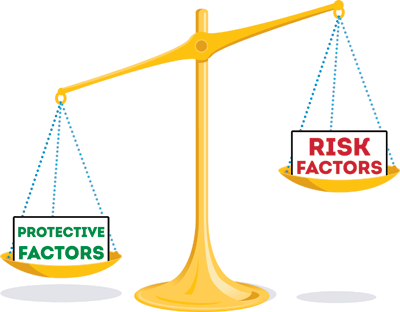What can we do to help kids right now,
including our own?
Whether you’re a parent looking at your own children, or a community member thinking about all the kids growing up around you, ACEs science can seem pretty alarming at first glance. Stress and traumatic events can cause permanent changes in a child’s developing brain, but of course it’s impossible to create a childhood that’s absolutely stress-free. After a year of pandemic and lockdown, we don’t have to think hard to come up with a traumatic event that is truly beyond our control. We can’t prevent kids from having some exposure to stress.
Even in a more normal year, a family may experience serious illness, or even the death of a relative or close friend. Sometimes there are economic ups and downs; a parent may lose a job, and it might be a struggle to have enough food or other basics at home. And of course there are more moderate stressors that can be a big deal for kids—a favorite teacher might change to a different classroom, or a friend might move out of town.
So, if all kids everywhere experience stress at some point, how does anyone grow up to be a healthy adult? And what can we do to help kids right now, including our own?
ACEs science provides answers to both these questions, in the form of Protective Factors. The five Protective Factors work like antidotes to trauma and toxic stress; they sometimes reduce or even remove a source of stress, and other times they help a child deal with a stressful event and the big emotions that go with it. Together, the Factors build up children’s stores of resilience, so kids can rebound from negative experiences and grow up better able to handle stress as adults.
There are five recognized Protective Factors. Two of them deal directly with kids:
Social and Emotional Learning, which helps kids understand their emotions and name them, and then deal constructively with the difficult ones, like sadness and anger. SEL also helps kids learn to manage conflict.
Social Connections, which means not only other kids, but also grownups beyond the immediate household. Teachers, coaches, neighbors, babysitters, plus of course extended family members are all great connections that can bolster resilience.
As important as both of those are, often the most effective way to protect and help a child is to support the child’s parent.
There are lots of ways to be a good parent, but all of them start from a strong attachment between the child and the caregiver. A child always needs to feel loved and nurtured, and yet the reality is that, parenting can be hard, and parents who are overwhelmed by stress may have trouble finding the emotional energy to nurture their children. In the worst-case scenario, a highly stressed parent could lash out at a child. This is why the remaining three Protective Factors are all parental supports:
Parent Education, which helps parents understand how kids develop, and how to keep building that sense of attachment. When a parent understands why a kid is doing something (or not doing something), it’s often easier for them to manage the behavior, and for both parent and child to feel positive about the experience.
Concrete Supports for Parents, which offers assistance when families are straining to fill basic needs. Kids need enough to eat, a safe place to sleep, clothes that fit, a doctor to visit when they’re sick….these can all be hard to provide for parents who are struggling economically. A lack of basic needs is really a double burden for a child, since the physical toll is traumatic, and the parent is likely to be extraordinarily stressed about the situation as well.
Parental Resilience, which means that parents dealing with stress need their own network of emotional support. Family, friends, neighbors, counselors, pastors—there can be plenty of good options for someone to talk to, but a parent or guardian who feels isolated or is in particular distress may have a hard time reaching out or even knowing where to turn. During our year of pandemic isolation, it was suddenly easy for many of us to see why our support networks were not just nice to have—they were really necessary.
These last three Protective Factors are why an organization like Cope Family Center is absolutely vital as a part of the effort to keep children in our community growing up as safe and happy kids, into healthy, resilient adults. Cope’s parenting classes, home visitation program, diaper/formula distribution, and referrals to specialized services all offer some combination of parent education, concrete resources, and one-on-one support; all are Protective Factors. When parents reach out to Cope, they are often looking for tools to work on a current problem, but they’re also building the foundation of their children’s lifelong resilience.
Here are some resources to learn more about Protective Factors:
About Strengthening Families™ and The Protective Factors Framework from the Center for the Study of Social Policy
Core Meanings of the Strengthening Families Protective Factors from the Center for the Study of Social Policy
Protective Factors to Promote Well-Being from the Child Welfare Information Gateway by the U.S. Children’s Bureau


